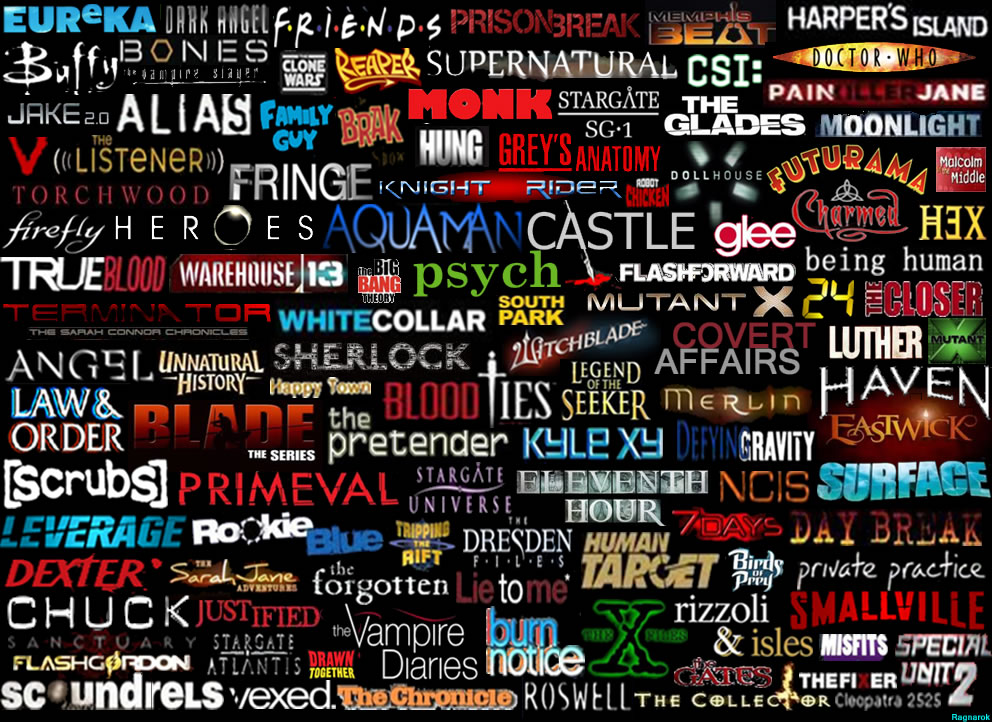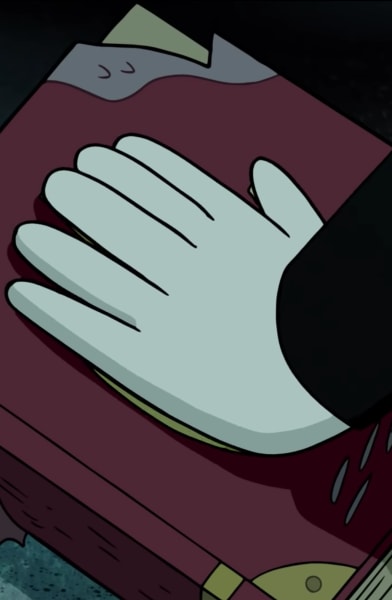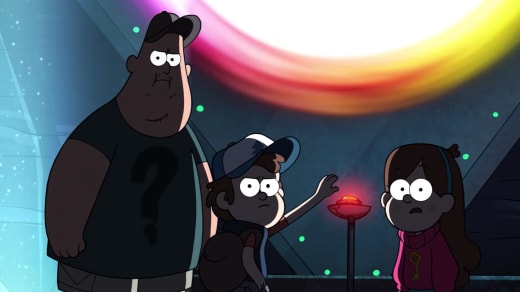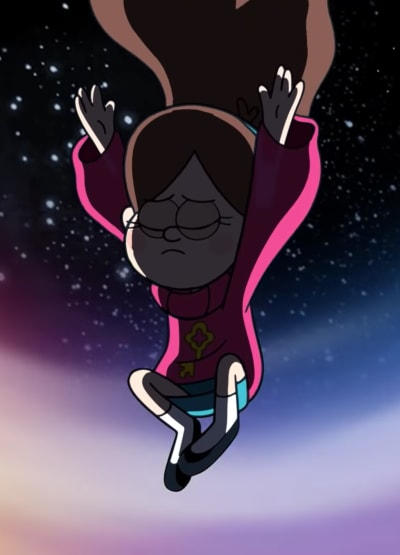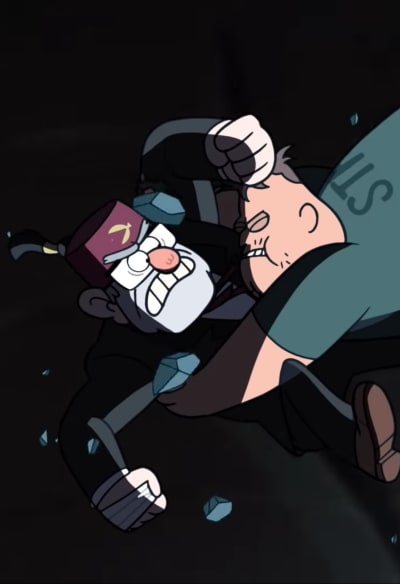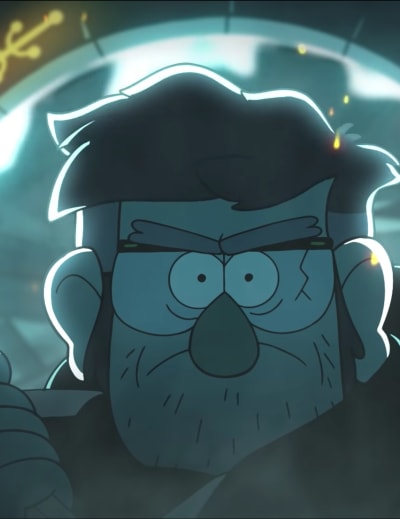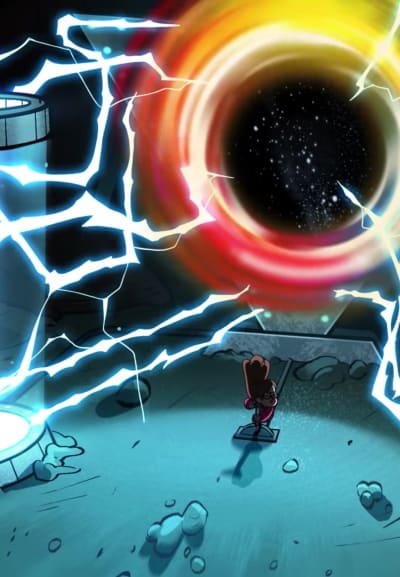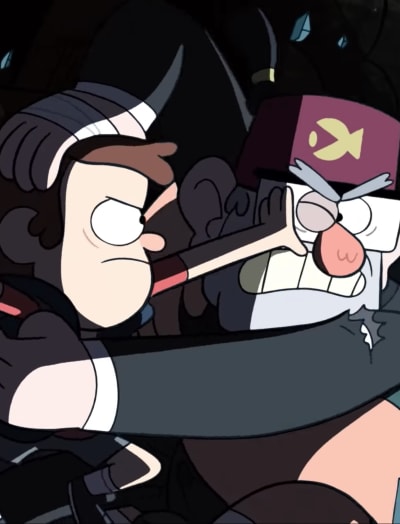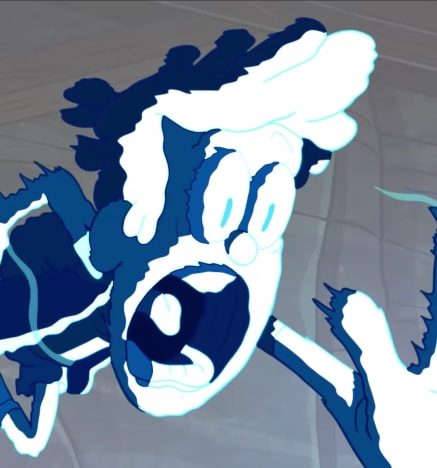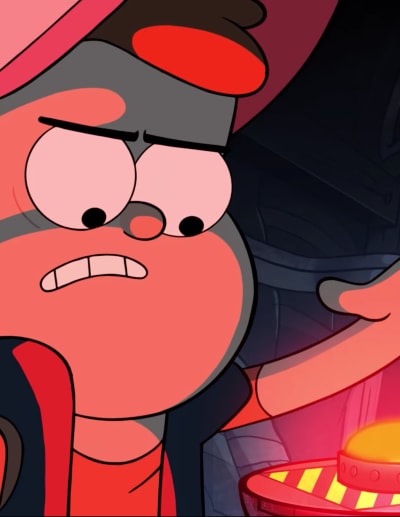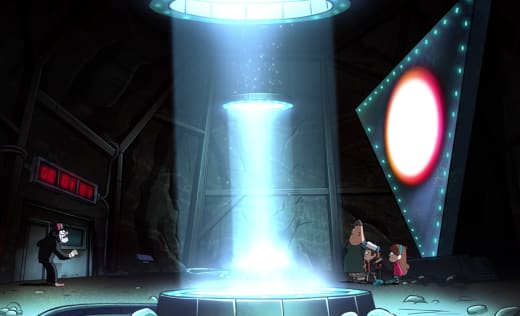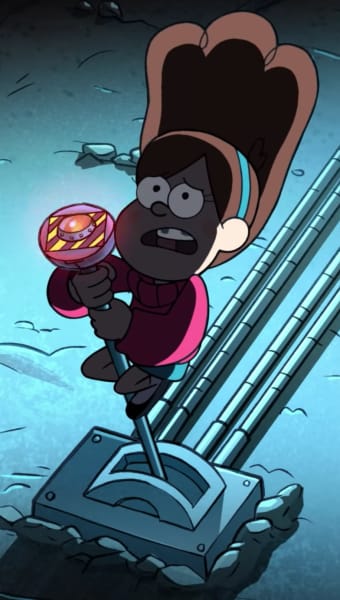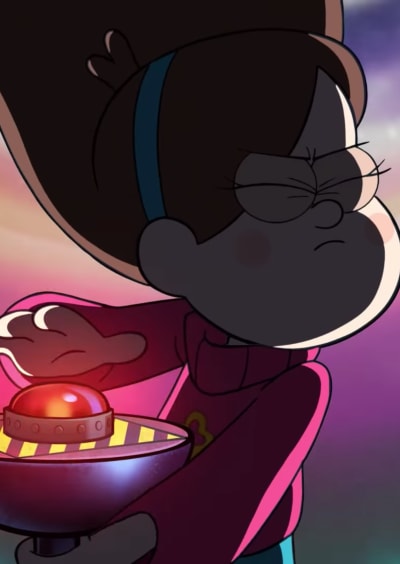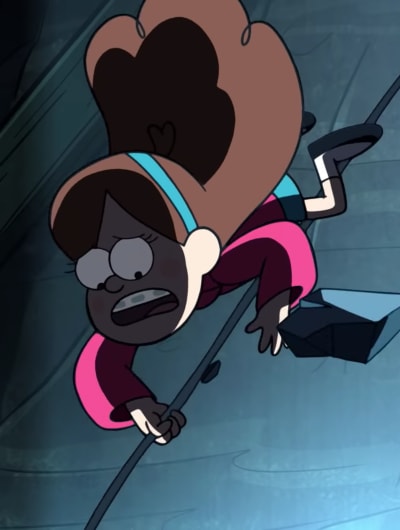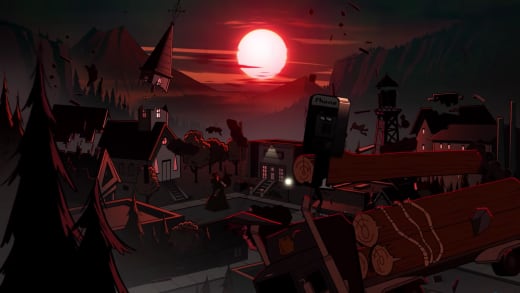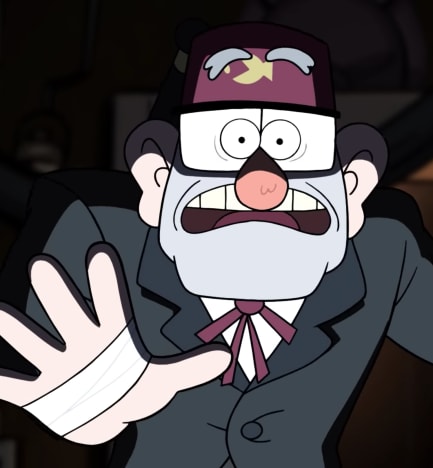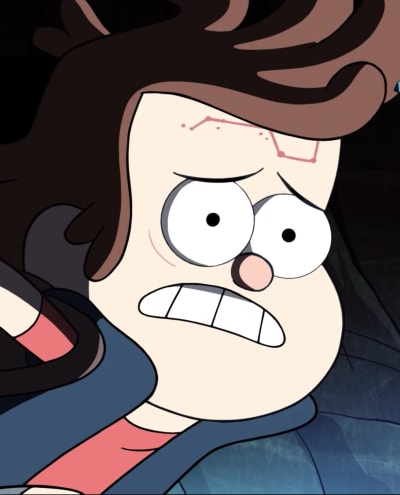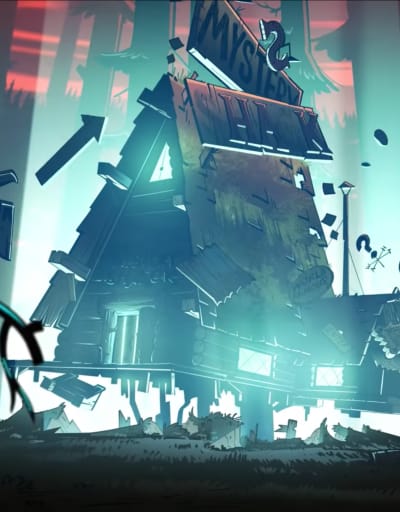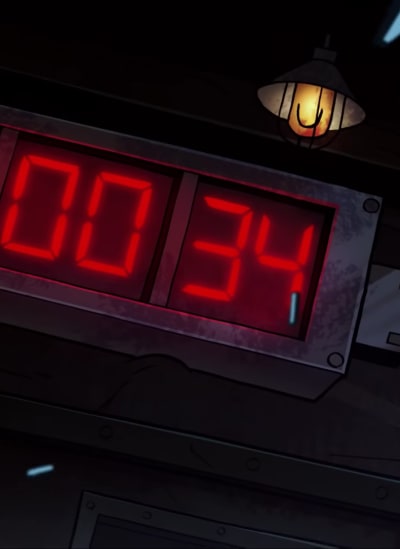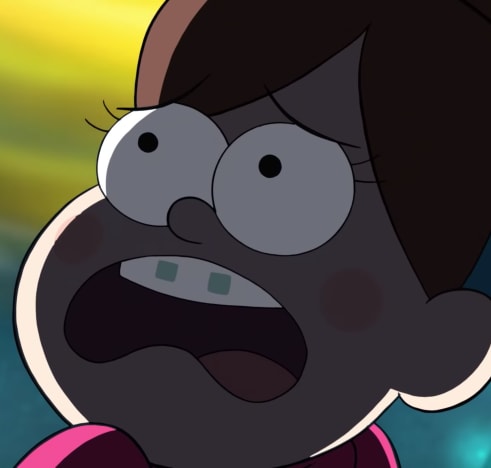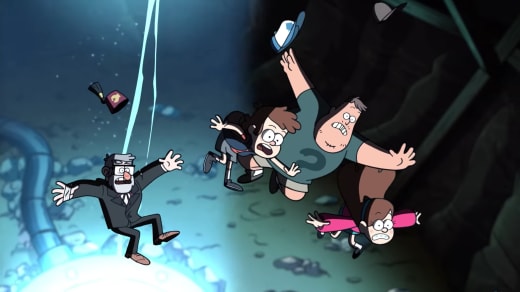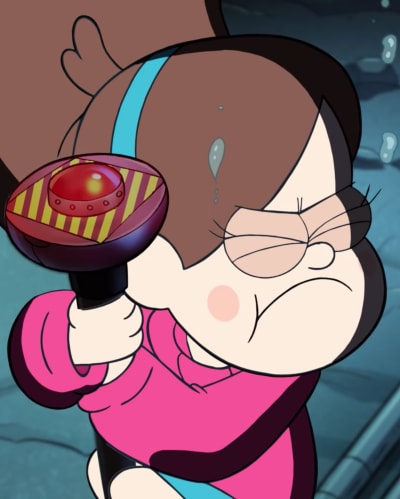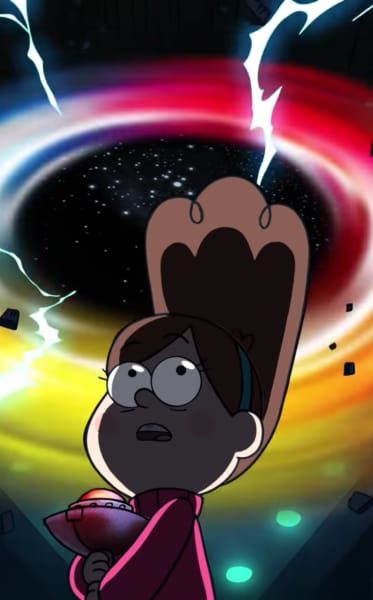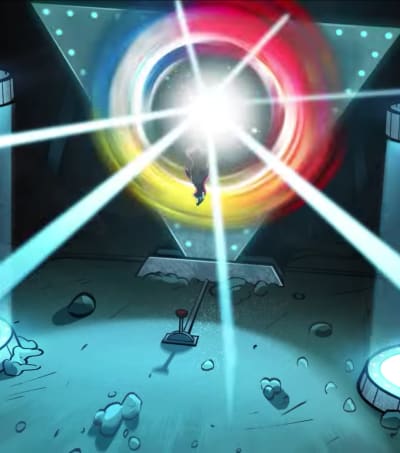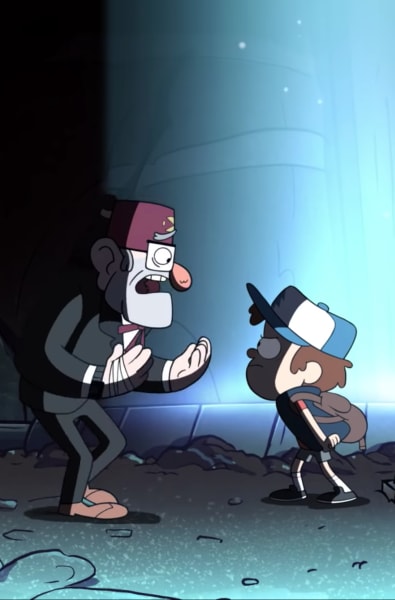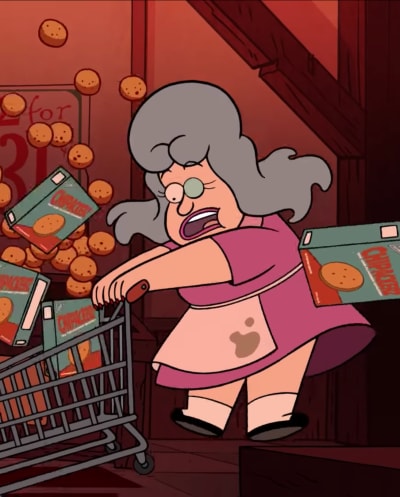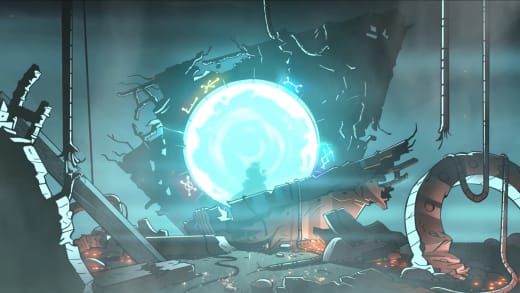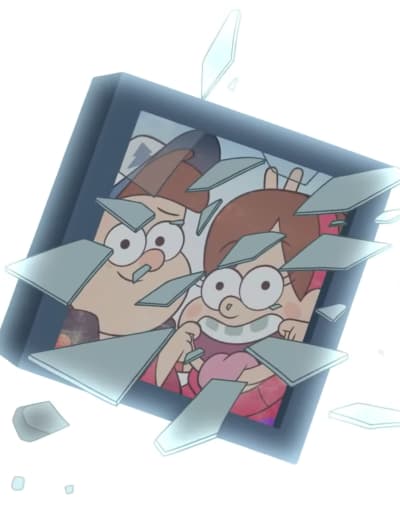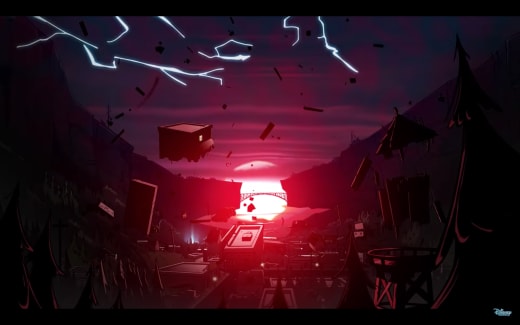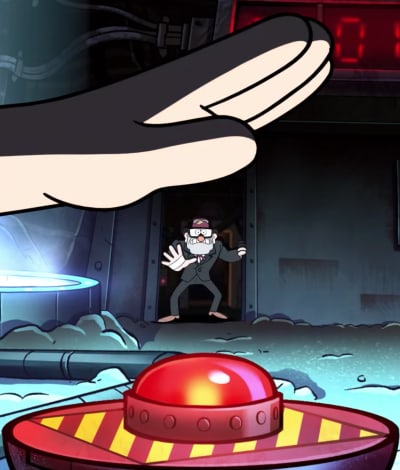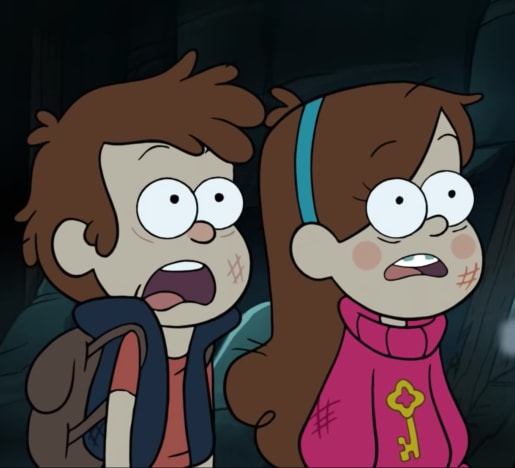Gravity Falls Season 2 Episode 11, “Not What He Seems,” delivers the perfect television scene.
What makes a television scene perfect is when each of its elements comes together to convey the emotion and story beats intended by the scene in the best way possible, and that scene is placed properly within the narrative to invoke the greatest amount of response from the audience.
The final scene of “Not What He Seems” exemplifies all of the above. At this point on the series, halfway through the second season, the lead characters Dipper and Mabel have learned that their Grunkle Stan (Great Uncle Stan), who they’ve been living and bonding with all summer, is not who he says he is.
In this scene, Stan has activated a portal in a secret lab underneath their home, the Mystery Shack, for an unknown purpose. Dipper and Mabel try to shut it off as it causes a gravitational anomaly that is lifting everyone and everything into the air.
Mabel ends up at the shutdown button and has to make the decision to turn off the portal or to let it run. Dipper wants her to shut it down, and Stan asks her not to.
At the end of the scene, the mysterious six-fingered author of the journals, the books that Dipper has been using to navigate the abnormalities of the town of Gravity Falls, is revealed.
Take a look.
Every separate aspect of this scene works together to create something great. Its writing, animation, voice acting, directing, editing, score, and sound design are all on point.
The writing in this scene is excellent because it uses the plot point of the portal to examine the relationships between the characters and allows them to dictate where the series goes through their actions.
Part of what is brilliant about “Not What He Seems” is that the central conflict isn’t about the information Stan has been keeping from the kids but whether or not they can trust him.
That gets established when he tries to explain himself to Dipper and Dipper dismisses him and tells Mabel that Stan’s lying, placing more tension in the relationships instead of in the reveals.
The children’s distrust of him prompts Stan to appeal to his bond with them instead of relying on exposition with an explanation. He loves them, so he makes a plea to Mabel to trust him.
Look into my eyes, Mabel! You really think I’m a bad guy?
Grunkle Stan
With Stan’s appeal to their relationship, Mabel stops thinking with her head and listens to her heart.
If the writing focused more on what the portal is or what Stan’s explanation is, then Mabel’s decision would be based on the credibility of Stan’s explanation instead of the authenticity of their relationship.
All of this writing builds up to a climax that invokes the most powerful storytelling device — a choice. Choices give characters agency over the plot and make them feel real, and they allow the audience to take an active role in a story by theorizing about what they would do themselves.
By giving Mabel the choice on whether or not to shut down the portal, Mabel gets to decide where the series goes next. She listens to her heart and decides not to shut the portal down, revealing her unwavering trust in Stan.
This scene masterfully explores who each of these characters is. Mabel is a kind, goofy, overly positive character, which is a character archetype that is often relegated to making jokes and keeping spirits up.
Here Mabel is thrown alone into a monumental decision that most of us would be unsuited to make, and she makes it based on her loving and positive personality. She is allowed to push the story forward with her character type instead of just keeping a tone.
Dipper, who is skeptical of Stan, is a boy of logic and conviction who values the truth above all. He provides the narrative with all the doubt needed to make Mabel question her faith in Stan, and this scene doubles down on his tendency to think with facts instead of emotion as he begs Mabel to turn the portal off despite Stan’s pleas.
This thing could destroy the universe. Listen to your head!
Dipper
Soos, the fun-loving man child that works for and idolizes Stan, shockingly turns on Stan in this critical moment. After adventuring with Dipper and Mabel all summer Soos has deemed them his family, and he isn’t willing to gamble their lives based on blind trust.
He’s had his own father issues in the past, so his willingness to turn on a father figure when he doubts them rings true.
Then there is Stan himself. Stan has been a man of deceit and lies throughout the series, though on a much smaller scale. He’s the self — proclaimed “Man of Mystery” who runs a sketchy souvenir shop where he rips off customers.
On “Not What He Seems,” the “Man of Mystery” title is no longer self — proclaimed; we and the rest of the characters don’t know who he really is or what he is up to, and this is a natural evolution of his character.
Stan is also infamously averse to the word “please,” so the fact that this word drips from his lips twice in this scene tells us exactly how important it is to him that the portal stays on. He also claims that everything he does is for his family, and with the final reveal that motivation is confirmed.
Trust me, everything I’ve worked for, everything I care about, it’s all for this family.
Grunkle Stan
The focus on character and relationships continues through the end of the scene when the mysterious character coming from the portal is finally revealed. Stan refers to him as “the author” and “my brother” in that order.
“My brother” is aligned with the reveal of the character’s face, which tells us that this character should be associated more closely with the fact that he is related to Stan than with his title as the author.
The writing in this scene naturally brings our characters into conflict and provides a resolution that is solely based on character by creating a climax that results in a choice.
It uses the plot to pull traits out of the characters and develop their personalities and relationships in meaningful ways while drawing upon the source material that came before it, expertly delivering a scene that advances the plot but is rooted in character.
That’s perfect writing.
The animation is beautiful. The colors are deep, the action is fluid, and the backgrounds are detailed. Due to the darkness of the lab, the portal truly pops out, clarifying its significance as the catalyst for the scene.
The desperation on the characters’ faces is obvious because their eyes are drawn with all the care needed to depict emotions accurately. You can pause the scene and see the struggle they are all facing with no sound needed.
If you did pause, you’d notice that each frame is exciting. There is debris everywhere due to the gravitational anomaly, yet the floating debris never becomes intrusive to the objects or characters the frame is focused on.
Small details, like Dipper’s forehead birthmark, create a sense of cohesion to the existing lore of the show. The way Mabel’s sweatshirt and hair flutter as she lifts into the air in front of the spinning portal makes the environment feel alive.
The animation team’s creativity is on display as the portal opens, and the characters get blasted into the light. Their forms slightly disfigure as they seemingly fissure away.
The animation is quick and heavy when the town comes crashing back down to the ground. This allows the weight of the objects to look like they are actually smashing into the ground instead of relying on the sound design to prop up the motion.
The detail is incredible when the scene focuses on the portal near the end. A cable can be seen slightly swinging, sparks fly from the machine, and the smoke dissipates. Every detail is accounted for.
The animation creates an environment that feels real through detail and realistic motion while keeping the most important objects bold and standing out. The animators detail the characters’ faces and eyes to support the voice acting and create emotion.
That’s perfect animation.
The direction and storyboarding of the scene are exquisite. It begins with a closeup of the shutdown button, identifying the source of conflict for the scene. Dipper’s hand goes towards the button but stops as Stan appears.
The lighting shows shadows around Stan and creates a sense of unease and mystery about him, prompting the question: should we trust Stan?
And I should trust you why? After you stole radioactive waste? After you lied to us all summer? I don’t even know who you are!
Dipper
This shot is immediately followed up with an image that highlights the divide between our characters, as a large line of light in the middle of the frame separates Stan from Dipper, Mabel, and Soos.
As Stan walks into the room, the countdown timer is clearly visible in the background, keeping viewers aware of the urgency of the situation without calling straight attention to it.
When the gravitational anomaly begins, the scene follows Stan, Dipper, and Mabel’s whereabouts within the space of the lab.
Stan and Dipper are forced away from the shutdown button, and Mabel gets stuck near it. Soos’ path is cleverly left offscreen, and the lack of knowledge to his whereabouts increases the surprise of the moment when he comes out of nowhere and tackles Stan.
Sorry, Mr. Pines, if that is your real name, but I have a new mission now. Protecting these kids!
Soos
Dipper, Soos, and Stan physically struggle against each other while they are verbally opposed. Mabel is separate from the confrontation and only able to watch, providing a visual representation for the helplessness she feels as tears start floating from her eyes.
She tightly grips the static shutdown button as if she’s trying to hold on to anything that makes sense.
When Stan starts to plead to Mabel, the camera starts out wide on him and slowly zooms in. From this point forward almost every shot is a closeup as the characters become more emotional and shout at Mabel, bringing us directly into their conflict.
Mabel is framed against the giant portal behind her, making her seem small against the backdrop, but a low angle provides her with some power, as she is the only one who is able to make the decision of whether or not to hit the button and shut the portal down.
The tension builds as the scene begins cutting from the clock back to Mabel. She has to make her decision.
Only now is the shutdown button finally returned to with a closeup, Mabel’s hand in view just as Dipper’s is at the start of the scene, except this time the hand moves away from the button instead of towards it.
Mabel lifts her arms, a well-known gesture for surrender, and submits herself to the power of the portal, and in turn, submits us to the wildness of the plot. The portal opens behind her, and the status quo officially changes.
Grunkle Stan, I trust you.
Mabel
The reveal of the mysterious figure coming from the portal is slow and deliberate. His face is hidden, and his hands are in fists, concealing his six fingers. His finger count is revealed as he places his hand on the six-fingered symbol on the journal cover, revealing that he is the author but teasing out his exact identity a little longer.
After his face is revealed, a joke is tagged on, giving viewers a lighter ending to this heavy scene. Even though Gravity Falls gets intense during this scene, it refuses to sacrifice its comedic identity for drama, which rounds out the scene to feel distinctly Gravity Falls.
Mabel: Is this the part where one of us faints?
Soos: Oh, I am so on it dude.
The gravitational anomaly is the second ingredient to make the scene feel very Gravity Falls. It provides an incredible amount of visual flair throughout the scene.
Visuals like Stan swimming through the air, Mabel climbing down a rope, and Dipper, Stan, and Soos spinning uncontrollably across the room, provide massive variety and uniqueness to these shots.
Even in the static character closeups, debris continues to float upwards, and this hectic nature emphasizes that the plot itself is turning upside down.
The anomaly also provides an incredible visual for the town falling apart, and the way the light is used to create shadows paired with the deep red sky give the scenario an apocalyptic feel.
Every directorial decision in this scene lends itself to the feelings it is trying to convey. The madness, emotional struggle and the pressure Mabel feels are all conveyed through the visual storytelling, and the distinct tone of Gravity Falls is never lost to the drama.
That’s perfect direction.
Another key aspect of a scene is the acting. Voice actors do not get the credit they deserve. Gravity Falls as a whole has awesome voice acting, but this is one of the standout scenes in the series.
Alex Hirsch, who plays both Stan and Soos, successfully conveys the desperation behind Stan’s voice as he begs the kids to trust him. The way Stan’s voice becomes more and more emotional as the scene progresses really hammers home just how much this moment means to him.
Hirsch has less to do as Soos during this scene, but he makes the most of Soos’ turn on Stan.
There is conviction behind Soos’ words, which is an attribute one would not normally assign to Soos. The line readings here are convincing — nothing is going to harm these children if Soos can do anything about it, and you feel it.
I find it massively impressive that Alex Hirsch can hit this wide a range of emotion while putting on such distinct character voices.
Kristen Schaal brings out not just the sadness, but the fear in Mabel as her tears begin to flow. She sounds exactly like a crying twelve-year-old. She never loses Mabel’s innocence, and when Mabel makes her decision to trust Stan, the fear and waver in her voice disappear. Mabel is sure of her decision.
Jason Ritter, who plays Dipper, might be the quiet MVP of this scene. Dipper isn’t a character that gets angry in a serious context very often, for most of his outbursts are designated comedic beats. There is a distinction between the two contexts that comes out in the voice acting here.
He’s lying! Shut it down, now!
Dipper
Dipper’s shouts are slightly deeper than usual, as he normally has quite a high pitched voice. Dipper’s been pushed to the edge, and there is no squeak or crack in his voice that suggests anything other than true drama. Ritter screams his heart out and gives the scene the legitimate panic it needs to succeed.
All the voice actors in this scene bring their characters to life by providing an exceptional emotional range and subtle details in each of their voices, not just to highlight their personalities but to display the unique desperation that each character feels.
That’s perfect voice acting.
Each shot in the scene is carefully chosen and edited to emphasize the setting and scenario as well as the consequences of the action on screen to both the characters and the environment around them.
Outside of shots of our characters, there are two main cutaways; the countdown timer in the lab and the town of Gravity Falls, including the Mystery Shack above the lab that the portal is in.
The editors focus on our characters at the start of the scene and use a wide shot to establish the space. When the portal causes the gravitational anomaly, we get our first cutaway.
We cut to the exterior of the Shack, further establishing the setting our characters are inhabiting, then cut out to several inhabitants of Gravity Falls before revealing a wide shot of the entire town falling into disarray.
Cutting away to the town shows that the actions of our characters have consequences outside of what is happening in the lab.
These shots up the ante on the external stakes — stakes that are not necessarily personal to the characters but are imperative to the plot — since it reminds viewers of the gravity of the situation.
The scene returns to the portal room by way of its other cutaway, the timer.
The timer is the perfect image to return viewers back to the lab because it is identifiable, so the viewer immediately knows where they are. It also establishes the countdown, which creates tension and suspense and fills the scene with a sense of urgency.
The show doesn’t cut explicitly to the clock again until Mabel has to make her decision. The choice to relegate the clock to the background during most of the scene keeps the focus on the characters, implying that the focus isn’t on the countdown but on Mabel’s decision.
The timer only serves as a time limit for how long that debate can go on instead of overtaking the moment as the key aspect. Once it is cut to, it is framed through Mabel’s eyes so we know she is looking at the countdown herself, further tying the circumstance to the characters.
After the timer reaches zero, and the event occurs, the editing pace slows. Each shot holds for much longer than during the climax, allowing the viewer to fully take in what’s happening instead of keeping the more frantic pace that was necessary during the rest of the scene.
The editing creates a sense of hecticness while maintaining clarity, and it achieves a balance between raising the external stakes and focusing in on the personal ones, pulling us directly into the conflict and story.
That’s perfect editing.
The music in this scene is composed in a way that is both conventional and exceptional. The score during the action pieces is very typical of most action scenes. It contains loud pulsing drums and intense blares of horns.
These timbres and tempo are commonplace for action scenes because they get the viewers’ hearts moving and command their attention with loud bursts of percussion and stingers provided by the horns’ crescendos.
The score during the dialogue beats, however, is much quieter and reflects a range of emotions with sounds that are both unsettling and serene. When Stan first enters the scene, the action music pauses, and space is filled with a synth sound that creates an air of uncertainty.
The notes aren’t steady and warp slightly, emphasizing the uncertainty surrounding Stan. Once the action starts back up again, the drums and horns blast back in.
The score shifts tone again when Mabel begins to cry. It matches her sadness by bringing solemn strings to the forefront in a minor tone.
Once Stan starts begging Mabel to trust him, the synth from Stan’s entrance returns. At this moment, the music doesn’t blare or sting; it’s almost serene and intimate.
Grunkle Stan, I don’t even know if you’re my grunkle. I wanna believe you, but …
Mabel
It matches the nature of Mabel’s decision, as it isn’t a choice about the fate of the world but about Mabel’s trust in her relationship with Stan.
As the melody starts low and slowly climbs upwards, it creates a build in the music that coincides with the build of the dialogue.
In the final moments of the countdown, the music becomes dissonant, and the strings return with an unsettling crescendo, bringing us to the climactic moment of Mabel’s choice.
The decision to score the action beats conventionally and the dialogue beats intimately creates a contrast between the action and dialogue. It subtly hints that the dialogue beats are the moments that mean the most to our characters and in turn should mean the most to the viewers.
Once again, the score keeps the focus on the relationships and characters and not the crazy science fiction madness happening around them.
As the portal opens, the music finally mixes its two styles, with the heavy drums and low horns blaring to create tension and the synth outlining a simple melody above them.
Once the event is over, the music simplifies. The minimalist nature of the final beats encourages the viewers’ minds to speculate and try to fill in all the blank space in the story before the final reveal, which is emphasized by another crescendoing stinger.
Dipper: Who is that?
Grunkle Stan: The author of the journals. My brother.
The score in this scene contrasts the action moments with the dialogue moments by effortlessly shifting the tone to best emphasize what’s happening on screen, resulting in emotionally devastating moments that belong to the characters and the viewer instead of the portal in the background.
That’s perfect scoring.
Sound design is a huge aspect of visual media. It often goes unnoticed, but that is the hallmark of good sound design. Great sound design goes unnoticed while adding story and detail to a scene that can’t be provided any other way.
The sound design in this scene keeps the tension high while staying invisible. It achieves this by filling blank space and all but disappearing during dialogue.
There are no silent moments.
Whenever there is a break in dialogue, the timer can be heard beeping in the background. Since the scene doesn’t explicitly cut away to the countdown timer during the characters’ struggle, a voice is heard calling out the time left on the clock, keeping the viewers aware of the time.
When characters are speaking, however, the beeping and vocal countdown either fade or completely cut out, allowing the dialogue to take up all the space.
Look, I know this all seems nuts, but I need that machine to stay on. If you just let me explain …
Grunkle Stan
The sound designers recognize that while it may not make audible sense that the timer randomly stops beeping, telling a clear story is more important, and having the timer compete with the dialogue is not an effective way to convey the emotion of the scene.
The designers continue to make seemingly illogical sound choices in this scene. There is a whizzing sound effect accompanying the moment when objects lift off the ground and a wind-like sound effect that accompanies Stan and Dipper’s pushes off the walls as they travel through the air.
Neither of these sound effects makes sense since these actions would theoretically be silent, but we feel these liftoffs more because the added sounds make these fantastic moments seem tangible, which ends up pulling us further into the scene.
The portal has amazing sound design in all facets. The static, the way it makes a “FOOM” sound when it opens, and the rippling effect when Stan’s brother walks through it contribute to making it feel real.
It is classic science fiction sound design, and while it may be a little derivative of previous science — fiction stories, the sounds make it clear that we are dealing with science and not some sort of magic.
When Stan’s brother exits the portal, regular foley effects such as footsteps and placing a book in a coat pocket suddenly become much louder, highlighting the importance of his presence.
Overall the sound design further establishes the environment, adds depth to otherwise silent actions, and emphasizes the importance of the scene, all while remaining unobtrusive to the story at hand.
That’s perfect sound design.
“Not What He Seems” is an episode where every department is on their A-game and the final scene is the result of that effort, but this scene doesn’t exist in a vacuum. No matter how well you nail each aspect of a scene, it doesn’t matter if the scene isn’t delivered at the right part of a well-written narrative.
Gravity Falls is a smart, funny, and surprisingly deep series with unique and layered characters. By the time this episode rolls around, viewers have watched these characters change and grow throughout a season and a half, but most importantly, they’ve watched them grow closer.
Grunkle Stan has earned the kids’ trust completely by season two, and the trust that he’s built with them is the crux of this climactic scene.
If this scene took place in season one exactly as it is, it wouldn’t be perfect. The show wouldn’t have been able to put in the time necessary to build the relationships that are being threatened.
The stronger the bond between Stan and the kids is, the higher the stakes in this scene are and the more powerful the story becomes.
You’re gonna hear some bad things about me, and some of them are true.
Grunkle Stan
Stakes are only as important as they are to the characters, which is why small stakes such as Mabel trusting Stan can be even more engrossing than saving the world.
The idea of the world being in danger is fairly abstract, so the closer a story grounds a plot to a personal crisis the more invested the characters, and therefore the viewers, become.
Television is primed to make these personal stakes incredibly powerful. Not only can relationships between characters be built on over years of air time, but viewers themselves begin to treat television characters as personal friends over their time watching.
Watching our favorite shows becomes as great a comfort as dining with our best friends (sometimes even a greater comfort).
With thoughtful, consistent writing and good characters, television can combine the viewers’ personal attachments with long term narrative relationships to create stories that can reach a person on a very deep level, creating some of the tensest and most powerful scenes in the media landscape.
“Not What He Seems” delivers its final scene through this phenomenon. Our attachment to the characters that built over a season and a half is leveraged to create higher tension drama.
Not only are the characters’ relationships thrown into danger, but our own sense of who Stan is gets questioned since we feel like we know him personally. We become Dipper and Mabel; half of us shouting to shut the portal down and half of us shouting to trust Stan.
Taking an audience on an emotional journey where they identify and feel real emotions alongside their favorite characters is the pinnacle of what storytelling can do.
“Not What He Seems” final scene uses all of the different aspects of television — writing, visuals, directing, acting, editing, music, sound design, and the viewers’ investment — to accomplish this.
Each piece works in tandem to convey the emotions and story beats intended by the scene, and the scene is placed perfectly within the narrative to result in the highest possible stakes for our characters, thus creating the highest amount of investment and emotion from the audience.
That’s a perfect television scene.
Tommy Czerpak is a staff writer for TV Fanatic. .
